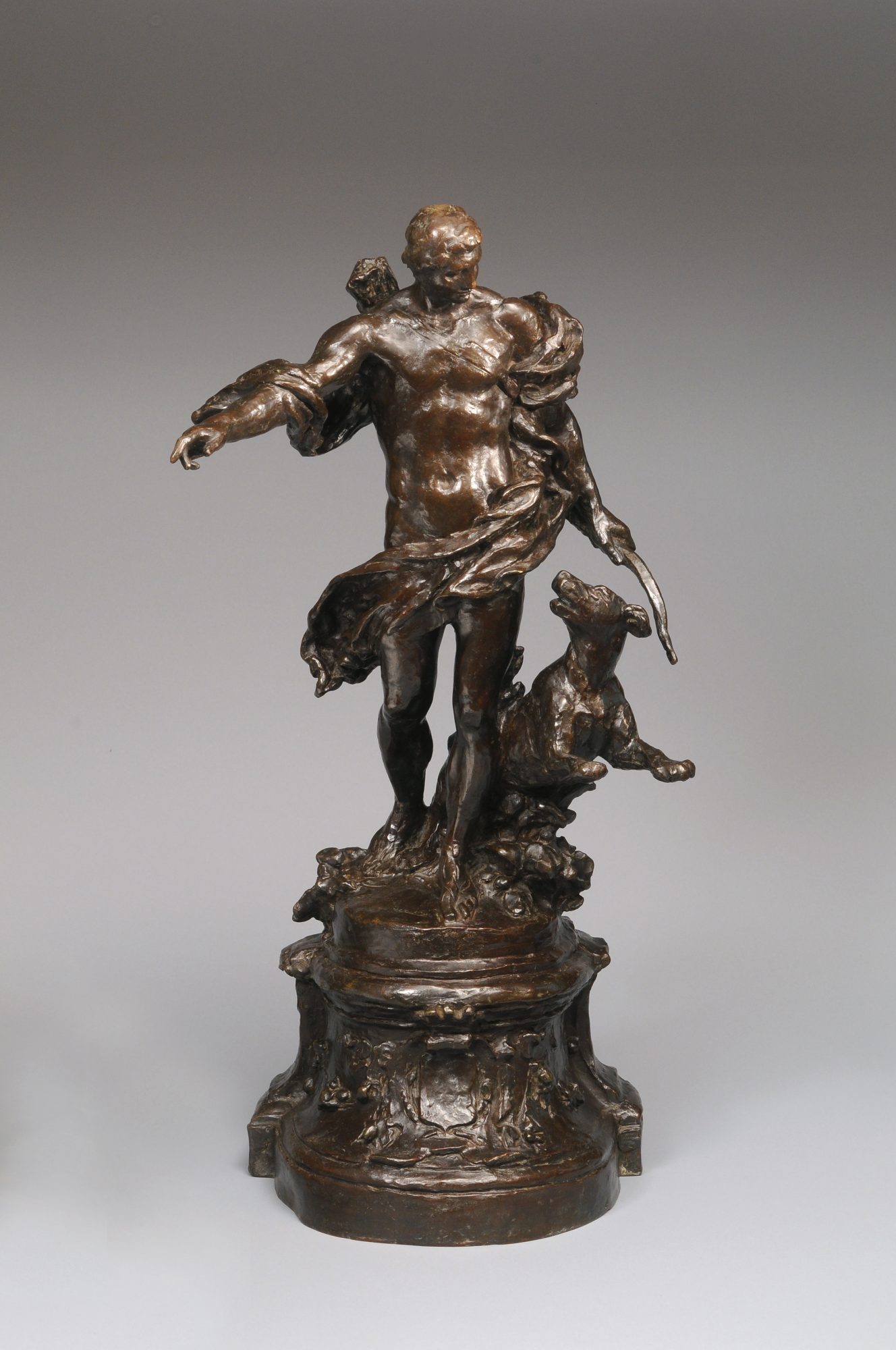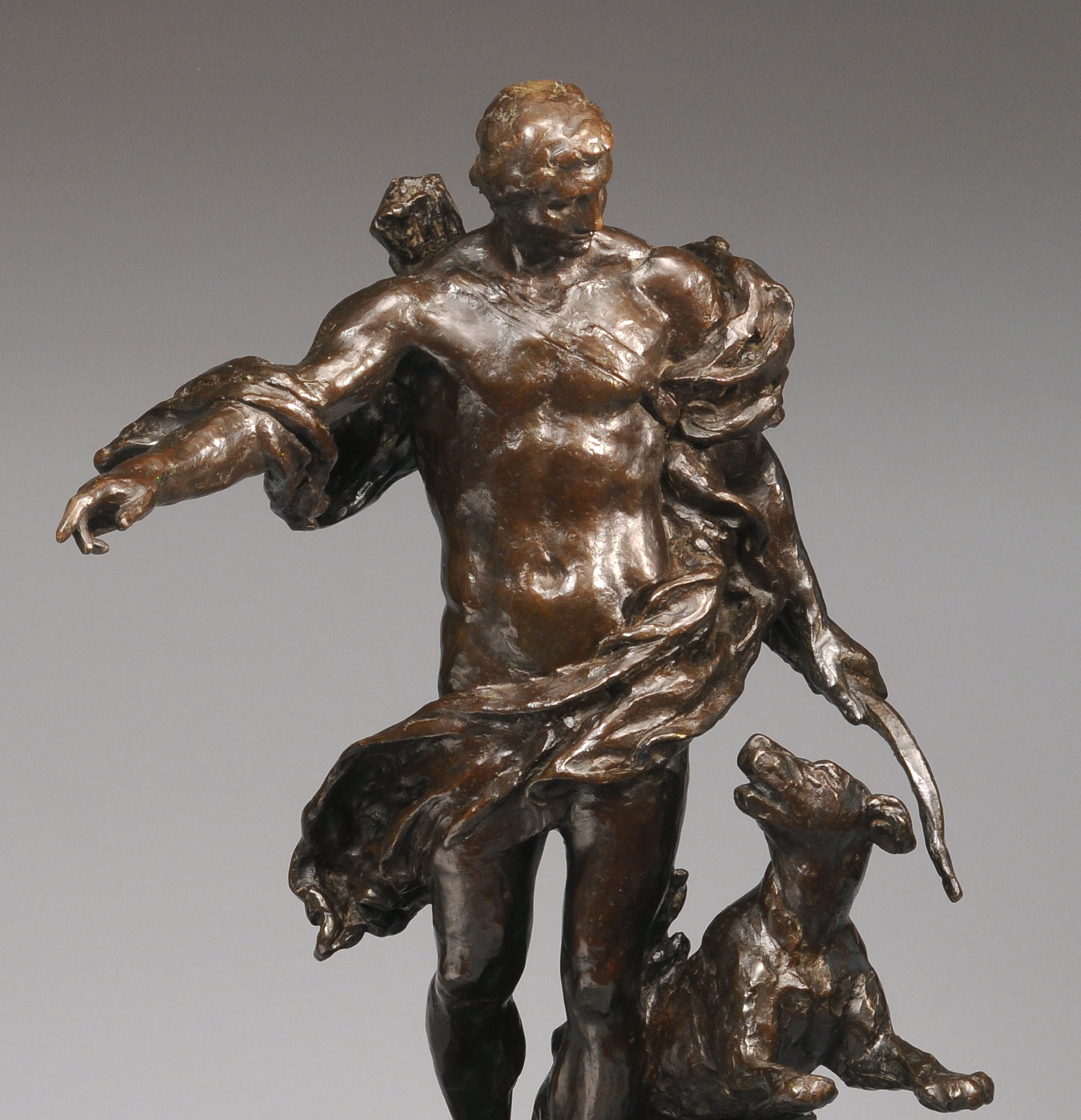A Hunter and his dog by Dalou
AIMÉ-JULES DALOU
Paris 1838 – 1902
Aimé-Jules Dalou was one of the most important sculptors of the French Third Republic, he was close to the realist movement and an important part of his career was dedicated to Republican subjects.
Another major aspect was closer to more ornamental pieces, which fully expressed his taste for the great baroque style. His friend and rival, Auguste Rodin remembered Dalou as « A great artist who created many sculptures of superb decorative quality which can be counted with the most beautiful work done in seventeenth-century French « .
A HUNTER AND HIS DOG
Bronze / H: 63,5cm / Signed Dalou / Foundry mark « Cire perdue / A A Hebrard » numbered 1 (edition of 10)
This bronze represents a standing hunter, he is looking down to his left towards a jumping dog. He is naked except for a drape flying around him. The antique influence and the bow in his left hand could make us interpret him as a mythological figure like Meleager for instance. The pose refers to two sculptures from Versailles : a bronze copy of the Apollo Belvedere and a marble Diana.
The statue stands on an ornamented pedestal with vegetal motifs. The overall effect of this richly decorated piece can be linked to the baroque style, with an emphasis on the movement and the dynamism of the pose. This corresponds to Dalou’s interest in 17th century sculpture.
Bronze pieces constitute an important part of Dalou’s production, it is noteworthy to specify that most of them were cast after the sculptor’s death. Hebrard’s specialty was lost wax casting, most of them are numbered, usually from 1 to 10. Others were edited in greater series, each one designated with a letter. This piece belongs to such a series. This model was originally realized as a project for a group for the Duc de Gramont’s Chateau de Valliere where it would have taken place in a staircase.
Had it been completed, it would have been Dalou’s second major sculpture for the Gramont family. »Les Epousailles » (Salon 1892) was intended for the Gramont mansion in Paris, but later moved to their château.


